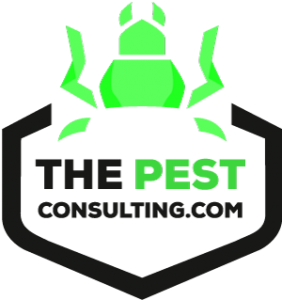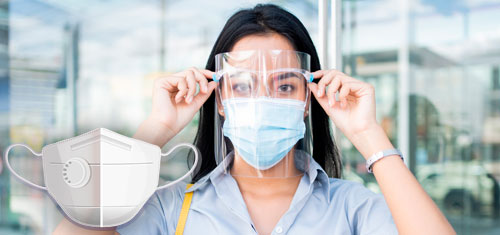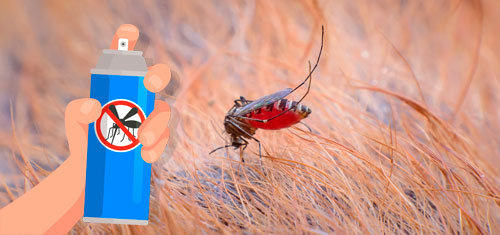5 Best Pest control Methods 2020

There are few unpleasant surprises that can overcome the horror of finding our home with a plague invasion. The good news is that there is no need to despair, today there are multiple methods to control and eliminate pests, among which we can choose.
We can order them into five categories and choose between: hygienic, biological, chemical, physical, and heat treatment. These are called by the action agent to fight the invaders, and each will have a different degree of effectiveness depending on the extent of the pest and the insect or rodent.
1. Hygienic methods
A clean and organized environment is vital to avoid pests. The uninvited guests (Pest) are looking for dirty places with scraps of food and garbage, ideal to have their food secured and reproduce with peace of mind. The disorder also provides them with the perfect environment to hide and move without being seen
Without basic and regular hygiene, the duration will be very short despite hiring the best pest control service. In a short time, they will again have the ideal conditions to form their home of that space.
However, despite our efforts to keep everything clean and organized, many infestation situations are beyond our control. This is the sign that it is necessary to use another control method when calling a company specialized in pest control.
2. Biological methods
This method could also be called a natural method, because it does not use chemicals or other substances, is so simple and takes advantage of the biology and natural cycle of life.
Natural predators
Natural predators are a new and very effective technique. It is mostly used in orchards and gardens, where we do not want to apply chemicals, we can easily counter pests, such as using ladybugs to control garden fleas. Now, not everything is so perfect; this tactic has disadvantages and risks that we can run. If we introduce a new species to an area without studying it, it could negatively affect and then have an excessive proliferation of this new specimen.
Microorganisms
Another way to bring the garden in order is to use microorganisms; this technique is more complex. It needs to be implemented by trained workers, and unlike natural predators, the use of microorganisms to control pests is a preventive method. If a microorganism is in a symbiotic relationship with a plant, it will actively protect the plant by deterring pests and destroying harmful bacteria and fungi. It is almost a relationship of loving protection on the part of these very small organisms.
3. Physical methods
Physical methods are more suitable for farms, gardens, or small populations of rodents or insects, including hunting, slaughtering, and disposing of corpses. The first thing to consider is to remove any potential place to make it your home, either for food or by facilitating your hiding place once the breeding sites are removed, make sure to clean the dark and wet areas regularly.
Bait
This physical method is easy to use, make sure to place it in an area where invaders have access to it and can ingest or take it away. It usually comes in granules or gel, to facilitate its placement. It is highly effective; you only have to be very careful if there are children or animals in the area. If swallowed, it can present a risk to your health. it is advisable not to place it in an area that can access or limit your access to it.
Traps
It is perhaps the most recognized pest control method used to attract everything from small insects, such as ants, cockroaches, or flies to small animals like mice and rats. Traps can vary in complexity, from simple paper with bait and glue to more complex ones such as mousetraps or mechanical cages.
This technique owes its success to the strategic placement of the trap, in the places known to transit the animal in question. It is necessary to review and dispose of corpses in achieving their purpose constantly.
4. Chemical methods
It is sure to be the most effective and most widely used pest control method, is very reliable, and presents several options depending on the pest type. It is of the utmost importance that it is managed by trained personnel, and always read and follow the instructions prescribed by the manufacturer before using them since their effectiveness is compared to the toxic risk posed to health from misuse.
Insecticides
These chemicals are specifically designed to kill insects, such as ants, cockroaches, flies, bed bugs, or termites. It can mostly occur in spray or coarse powder as granules.
Aerosol insecticides are mainly used for flying insects such as cockroaches or flies; however, sometimes it is necessary to spray them several times until they get tired or the poison takes effect and surrenders. It is usually advisable to collect the corpse but leave the residue of the product.
On the other hand, powdered insecticides or granules are perfect for those pests that make nests or bring food to the colony, such as ants, since the poison is mistaken as potential food, and they transfer them to the nest or ingest it at the moment. Even when they are fast-acting, the insect dies later and usually away from the area where the product was located.
Rodenticides
The rat poison is undoubtedly the most lethal and effective of pesticide chemicals, their high toxic grade is due to the cautiousness showed by rats and mice to a food source, they are undoubtedly lethal, and poisoning occurs very quickly.
On the other hand, its lethality to rats is dangerous and effective against mammals when ingested by carelessness, whether humans, dogs, cats, or other small animals. This shows the need to handle it with caution and read before use and application, always following manufacturing guidelines.
Fumigation
The last option to consider, but certainly, the most effective and results are fumigation. However, it has the disadvantage of staying out of the area for at least a week, which is like unleashing a nuclear bomb for all invaders. When hiring a fumigation service, access to the area should be sealed for up to about 72 hours, while a large amount of strong pesticide is sprayed.
This procedure will eliminate not only adult pests but also insect eggs or larvae that are present. The pesticide in use is potent, cannot remain in the area during fumigation, and then the property must be ventilated for at least one day before returning.
5. Heat Treatment
This pest control technique is used to treat infestations caused by fleas, termite bed bugs, and other insects, popular because it does not require chemicals. During the heat treatment pest control service, the infested area will be gradually heated from 122 ‘F to 140 ‘F.
Increasing the temperature will eliminate unpleasant bugs at every stage of their development, eggs, larvae, and adults. It is a perfect alternative if you have children or pets and are terrified of scattering poison throughout your home, where you can access it.
Summary
I hope you completely understand how to control pests by using all the above techniques. On our website, you can also find the best methods and products for every pest. We will also guide about every product and pest. If you like this article, then also share with those friends who are looking for the best pest controls.





